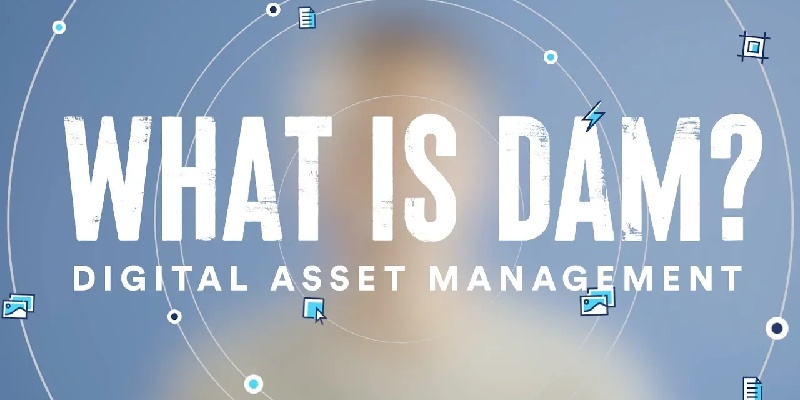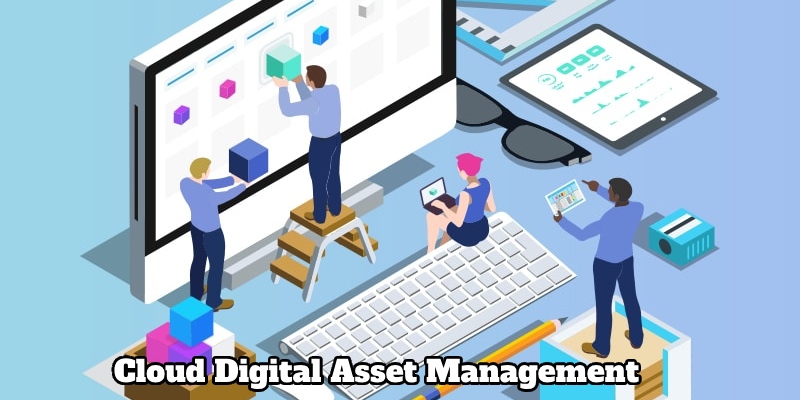Cloud digital asset management has emerged as a comprehensive and flexible solution, bringing convenience and high performance in the process of managing digital assets. Join us to explore the important advantages and features of CDAM.
What is cloud digital asset management?
Digital Asset Management (DAM) is a system for managing and organizing digital assets to optimize the storage, search, access, sharing, and distribution processes of various digital resources. These resources can include images, videos, audio files, design documents, and various other types of digital data.

Key functions of DAM include access permission control, assessment, and the attachment of metadata to provide detailed descriptions of digital assets. DAM not only enhances productivity and creativity in creative environments but also serves as an integral part of the information and resource management strategy for businesses in the current digital era.
Benefits of using cloud digital asset management
Using Cloud Digital Asset Management (CDAM) offers several benefits that contribute to improved efficiency, collaboration, and accessibility. Here are some key advantages:
Scalability and Flexibility
Scalable Storage: Cloud-based solutions provide scalable storage options, allowing organizations to expand or reduce their storage capacity based on their needs.
Flexible Access: CDAM enables users to access digital assets from anywhere with an internet connection, promoting flexibility in work arrangements.
Cost Savings
Reduced Infrastructure Costs: CDAM eliminates the need for organizations to invest in and maintain on-premise hardware, resulting in lower infrastructure costs.
Pay-as-You-Go Model: Cloud services often operate on a pay-as-you-go model, allowing organizations to pay only for the resources they use.
Efficient Collaboration
Real-time Collaboration: Cloud-based platforms facilitate real-time collaboration, enabling multiple users to work on and access digital assets simultaneously.
Version Control: CDAM systems often include version control features, ensuring that collaborators are working with the latest version of digital assets.

Improved Search and Retrieval
Advanced Search Capabilities: CDAM solutions typically offer advanced search functionalities and metadata tagging, making it easier to find and retrieve specific digital assets quickly.
Centralized Repository: All assets are stored in a centralized repository, reducing the time spent searching across various locations.
Enhanced Security
Data Encryption: Cloud services implement robust encryption measures to secure data during transfer and storage, enhancing the overall security of digital assets.
Access Control: CDAM systems provide granular access controls, allowing organizations to manage and restrict access based on user roles.
Automatic Backup and Recovery
Data Redundancy: Cloud services often incorporate redundant data storage across multiple servers and locations, reducing the risk of data loss.
Automated Backup: Regular automated backups ensure that digital assets are protected against accidental deletion or system failures.
Global Accessibility
Access Anytime, Anywhere: Cloud-based systems enable users to access digital assets from various locations and devices, promoting global accessibility and collaboration among distributed teams.
Updates and Maintenance
Automatic Updates: Cloud service providers handle system updates and maintenance, ensuring that organizations benefit from the latest features and security patches without manual intervention.
Environmental Sustainability
Energy Efficiency: Cloud infrastructure is designed for energy efficiency, potentially contributing to environmental sustainability goals compared to maintaining energy-intensive on-premise servers.
Integration with Other Tools
API Integrations: CDAM systems often support Application Programming Interfaces (APIs), facilitating integration with other tools and systems used within an organization.
Important features of cloud digital asset management
loud Digital Asset Management (CDAM) systems come with a variety of features to enhance the management, collaboration, and utilization of digital assets. Here are some important features:
Scalable Storage
CDAM solutions offer scalable cloud storage, allowing organizations to easily expand or reduce their storage capacity based on their requirements.

Web-Based Access
Users can access digital assets through web-based interfaces, enabling flexibility and accessibility from any location with an internet connection.
Metadata Management
Advanced metadata tagging and management allow users to categorize and describe digital assets, making it easier to search and retrieve specific files.
Search and Retrieval Capabilities
Robust search functionalities enable users to quickly find and retrieve digital assets based on keywords, metadata, or other search criteria.
Version Control
Versioning features help track changes made to digital assets, ensuring collaborators work with the latest versions and providing a history of edits.
Collaboration Tools
Real-time collaboration features enable multiple users to work on the same asset simultaneously, fostering efficient teamwork.
Access Control
Granular access controls allow administrators to manage user permissions, restricting access to sensitive or proprietary assets based on roles and responsibilities.
Security Measures
Data encryption during transmission and storage, along with secure access protocols, ensures the protection of digital assets from unauthorized access or data breaches.
Automated Backup and Recovery
Regular automated backups safeguard against data loss, providing a safety net in case of accidental deletion or system failures.
Workflow Automation
Workflow automation tools streamline processes by automating repetitive tasks, approvals, and notifications, enhancing overall efficiency.
File Format Support
Support for a wide range of file formats ensures compatibility with various types of digital assets, including images, videos, documents, and more.
Preview and Thumbnail Generation
Thumbnail generation and preview capabilities allow users to quickly preview digital assets before selecting or downloading them.
Mobile Accessibility
Mobile-friendly interfaces or dedicated mobile apps enable users to access and manage digital assets using smartphones and tablets.
Integration with Third-Party Applications
APIs and integrations with other tools, such as content creation software, project management platforms, or marketing tools, facilitate a seamless workflow.
Reporting and Analytics
Reporting features provide insights into asset usage, user activity, and other analytics, aiding in performance evaluation and strategic decision-making.

Compliance and Audit Trails
Compliance features help organizations adhere to industry regulations, and audit trails provide a record of user activities for accountability and transparency.
Customization and Branding
Customization options allow organizations to tailor the CDAM system to their branding and specific workflow requirements.
Training and Support
Comprehensive training materials, documentation, and customer support services ensure users can effectively utilize the CDAM system and address any issues.
In conclusion
Cloud digital asset management is not just a digital asset management tool, but a powerful motivator behind creativity and increased productivity. Combining the flexibility of the cloud and the power of digital asset management, CDAM not only helps organizations save costs and optimize workflows, but also transforms the way we leverage and interact with digital assets.
